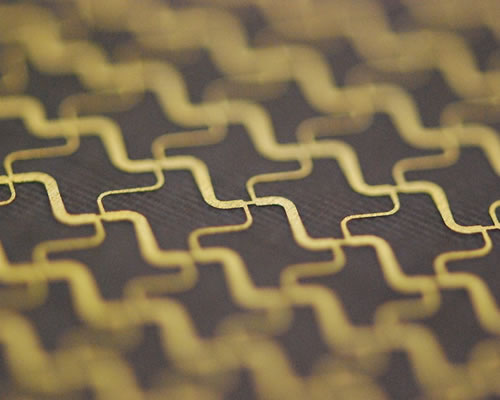Latest Research
Invisibility Cloaks and Metamaterials
PROFESSOR. Atsushi SANADA
 The light can bend in the vicinity of a planet with a massive amount of mass in the space. According to the relativity theory, this phenomenon is due to the fact that the coordinate systems around the planet is transformed by its gravity. If we could arbitrary transform the coordinate system around us, we would be able to fully control rays of light more than ever.
The light can bend in the vicinity of a planet with a massive amount of mass in the space. According to the relativity theory, this phenomenon is due to the fact that the coordinate systems around the planet is transformed by its gravity. If we could arbitrary transform the coordinate system around us, we would be able to fully control rays of light more than ever.
For instance, when we detour lights behind an obstacle and deliver them to an observer, the observer can see a scenery behind the obstacle. Consequently, the obstacle becomes invisible. This is how an invisibility cloak works.
In our laboratory, we are working on realizing the "invisibility cloak." Theoretically speaking, an arbitrary coordinate transformation can be realized by filling up the space with an equivalent medium with designed material parameters. The invisibility cloak can be realized by surrounding an object with the medium.
To realize a medium equivalent to a coordinate transformation, permittivity and permeability tensors parameters of the medium have to be highly controlled with a spatial distribution as well as its frequency dependences. Unfortunately, this medium cannot be found in natural materials nor be chemically synthesized so far. In our laboratory, we are exploring possibilities of artificial compositions of the medium by arranging fine subwavelength pieces of materials, such as silver or gold, mimicking natural atoms or molecules. This artificially composed medium is referred to as metamaterial.
We have already succeeded in developing the theory of the medium design and demonstrated an invisibility cloak operation at a several GHz in the microwave frequency region. (1 GHz = 109 Hz.) Since our invisibility cloak works in an extremely broadband frequency range, our theory and the implementation technique are expected to be ones of the most promising methods for realizing literally "transparent" invisibility cloaks at the visible light region.